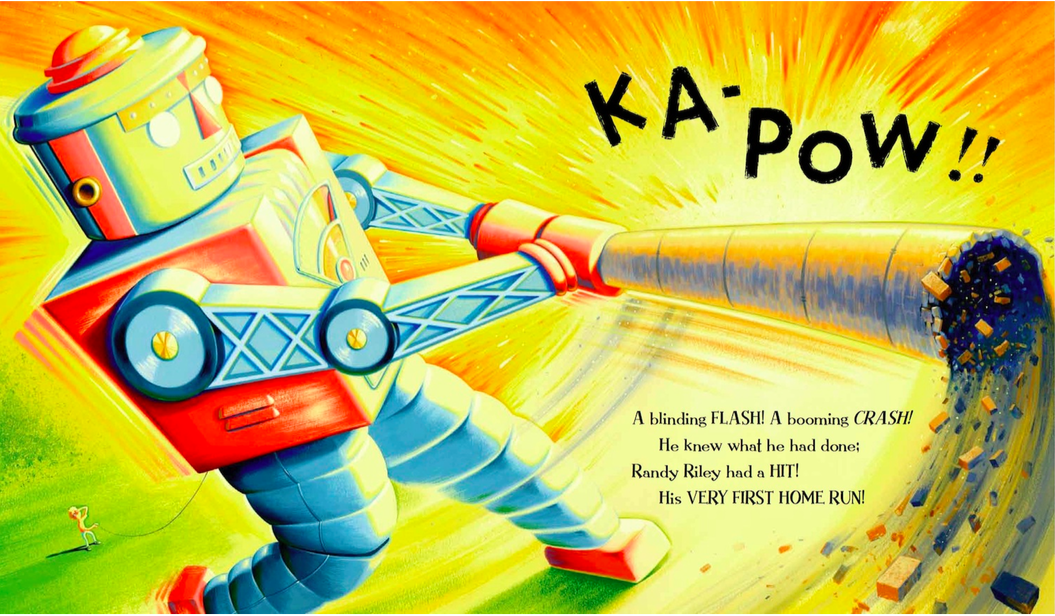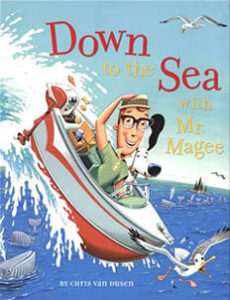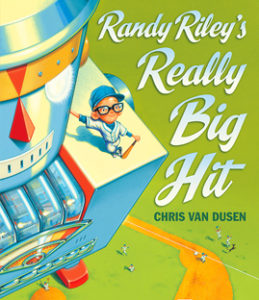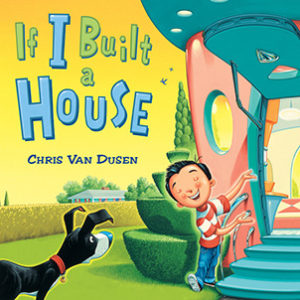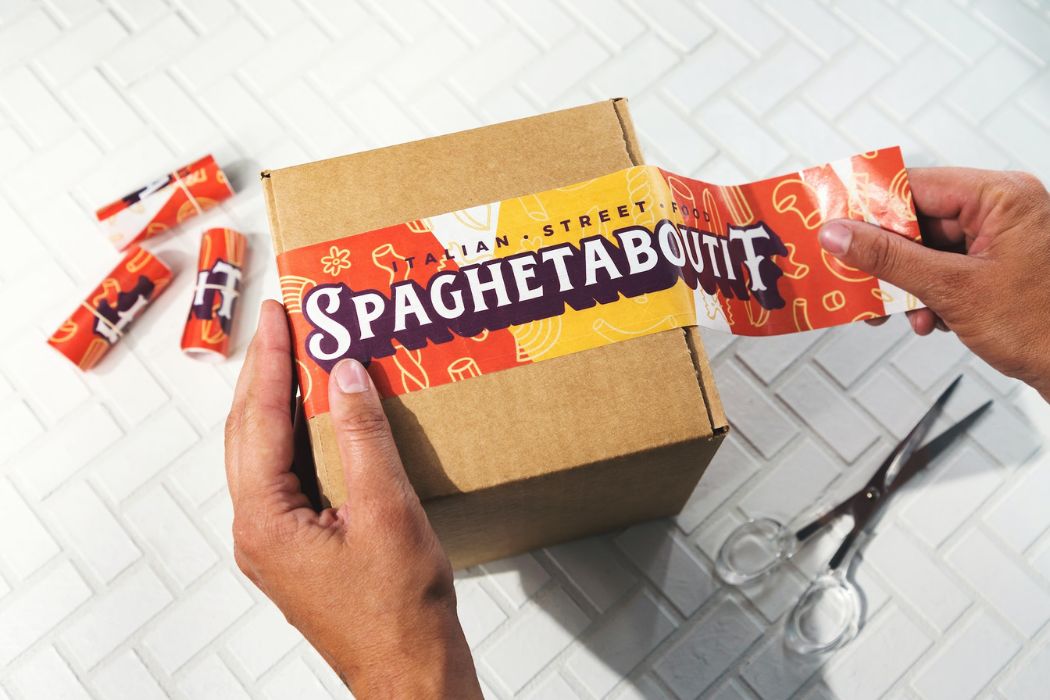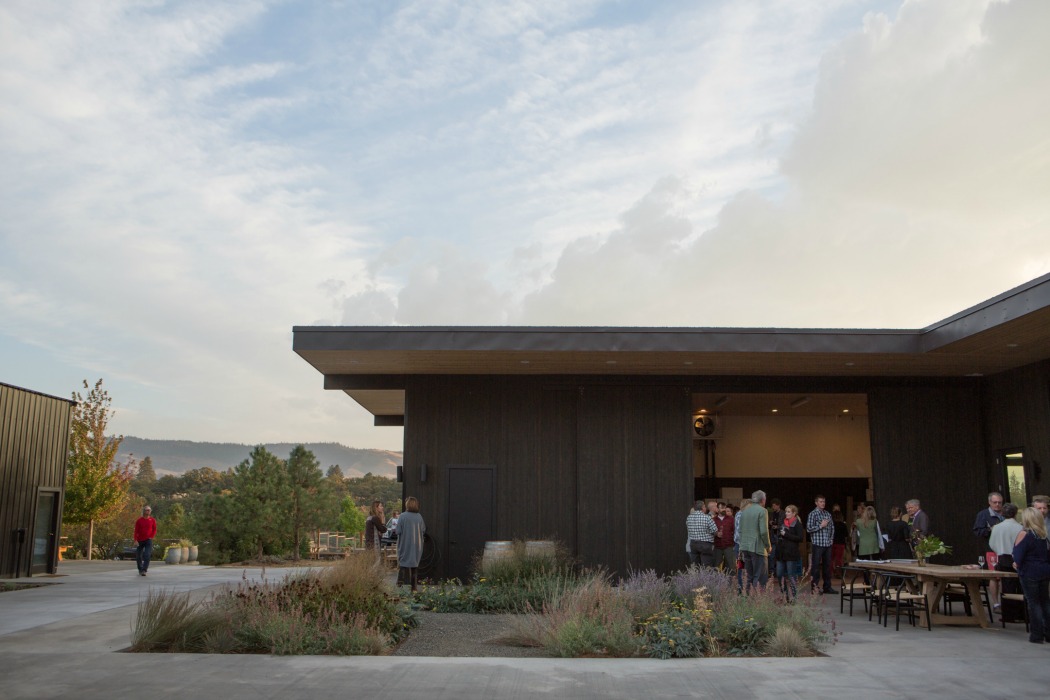Neighborhood bookstores, with curated collections, are hard to find in 2015. The quirky bookstore across the street is now a yoga studio and, truth be told, we’re just barely hanging on to the local Barnes & Noble. It makes the act of discovery tough, especially with children’s books, when you don’t have easy access to a really great bookstore. Browsing along the aisles with your head cocked to one side, that’s how you find the good stuff! And that’s exactly how I discovered the magic of Chris Van Dusen.
Chris Van Dusen has been illustrating for most of his life, but fell into writing children’s books in 2000 with the introduction of his first book, Down to the Sea with Mr. Magee. Today, he’s either written, illustrated or taken on both tasks to amass a catalog of more than 16 works bearing his name. His prose is rhythmic, often rhyming, but never talks down the audience. Van Dusen’s illustrations all but sparkle off the page, begging you to slow down and drink in all of the details, like reflections off chrome bumpers in If I Built a Car, or the diverse textures on the houses in The Circus Ship. These finer points are wonderful eye candy for children of all ages.
Van Dusen’s books inspire beyond clever words and pretty pictures, his stories tap into the core of our human condition. I know, it sounds a little dramatic when speaking about children’s books, but hear me out. Whether its about confidence (Randy Riley’s Really Big Hit), compassion (The Circus Ship) or imagination (If I Built a House), many of Van Dusen’s books help spark positive dialogue that, inevitably, helps shape a child’s sense of self. Now, that’s pretty major.
Our family’s Chris Van Dusen collection started with Randy Riley’s Really Big Hit (robots!) and expanded quite rapidly from there. After spending so much quality time with Van Dusen’s books, I was thrilled to connect with the author/illustrator/artist himself. I had so many questions- here are the top six:
You started as an illustrator and then bridged into writing children’s books later in your career. Was there a specific tipping point that inspired you to decide to write?
Chris Van Dusen (CVD)- After several years of freelance illustrating (mostly editorial work) I started thinking about what it would be like to illustrate my own stories as opposed to illustrating someone else’s words. Magazine work is very fast-paced with tight deadlines. It was stressful. One week you’d have several jobs to complete and the next week you’d wait for the phone to ring. I also grew a little tired of working in such a disposable industry. After all, magazines are thrown away. One day I actually saw one of my pictures in the recycle bin at the dump! I wanted to do something that was a bit more permanent. At the time, several of my peers were switching from editorial work to children’s books and that interested me as well.
Probably the tipping point came when I was working, one day, on a magazine illustration and an image popped into my head. It was of a man in his boat stuck way up high in a tree. I quickly sketched it out on a scrap of paper and set it aside. But I was intrigued by the image. I started asking questions like, “How did that guy get stuck there? And how will he get down?” That sketch became my first book, Down to the Sea with Mr. Magee.
Your mid-century modern-infused style of illustration is so unique. How do you keep yourself inspired to create new environments for your characters?
I grew up in the 1960s. The first house I lived in was a classic ranch that my parents built in 1959. It even had boomerang Formica on the kitchen countertops! I still love that retro style and it’s so much fun to draw. That’s why I set a lot of my stories in the 50s and 60s.
It started with my first book. I just couldn’t picture Mr. Magee driving a Camry or a Taurus, so I put him in a Rambler American and it worked! It set the time frame for the whole story. When I wrote Randy Riley’s Really Big Hit, the story was all about baseball and outer space and giant robots. It only seemed natural to set it in the time of UFOs and the space race. It had to be the 60s.
For reference, I use old Sears & Roebuck catalogs from the 1960s. I also bought a great book at our local library’s used book sale several years ago. It’s called The House Beautiful Treasury of Contemporary American Homes. It was published in 1958! That book has been a great source of inspiration.
Your stories have a running theme of empowerment and imagination. Do you consciously consider the book’s lesson before you start writing?
Sometimes yes and sometimes no. One of my first versions of Down to the Sea with Mr. Magee had a strong message of fair play. But it got way too heavy handed, so I simplified the story and turned it into a fun, silly adventure. All the Mr. Magee books are that way. But for books like Randy Riley’s Really Big Hit and especially King Hugo’s Huge Ego, I wanted the stories to have a message. I think they come through pretty clearly. In If I Built a Car and If I Built a House the message is to dream big and let your imagination run wild, although I discovered that after I’d written the first book. I didn’t think about it while I was writing the story. And in The Circus Ship I was experimenting with historical fiction and didn’t really even consider a message. It wasn’t until the book came out that my editor wrote in the front flap copy that the book was “about the unique bonds of friendship and community.” That’s why I say sometimes yes and sometimes no.
The publishing world continues to evolve, with authors increasingly responsible for marketing and public relations. Can you tell us about the marketing muscle that’s behind each new book you create?
I leave the marketing mostly up to the publisher. I’ve been fortunate enough to work with some of the best publishers in the business: Candlewick Press, Dutton, Dial, Chronicle Books and Balzer+Bray. They handle the marketing and distribution of the books and they are experts at it. They will also organize national book tours, but I schedule most of my local book signings and events.
Our family has almost all of your books. We’ve noticed there is a strong love of robots- where did your robot fascination start?
Oh, the robot thing! Well, it’s pretty obvious if you’ve read any of my books that I love robots. I guess it started back when I was a kid. My favorite TV show was “Lost in Space” which of course featured the famous robot. I remember acting out “Lost in Space” with my friends during recess on the playground when I was in elementary school. The jungle gym was our space ship (the Jupiter II) and I was always the robot. I even got a toy “Lost in Space” robot for Christmas when I was six years old. I guess the fascination never totally went away because when I became an adult I started collecting the toy robots from my childhood. I have about 25 lined up on the flat files in my studio. It was only natural that they’d end up in some of my books.
Finally, we can’t decide if Jack’s Racetrack Room or the Fish Tank Room (from If I Built a House) would be more fun- they’re both pretty awesome. Do you have a favorite?
Of all the rooms in Jack’s house, I’d have to say the Fish Tank Room would be the one I’d want. Can you imagine swimming with fish all day? That would be fantastic!
Think big! It’s good advice and the parting words on the back cover of If I Built a House. Discover this book and many others, along with original artwork, on Chris Van Dusen’s site, right here.
